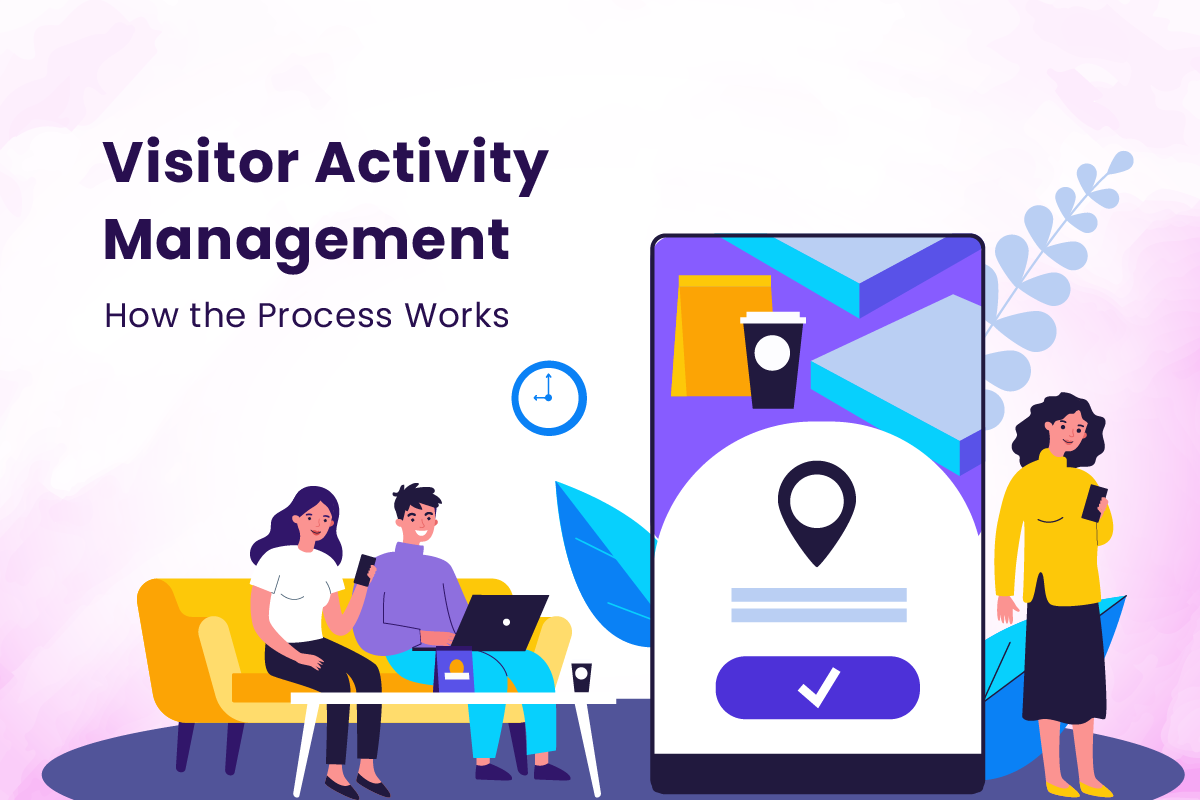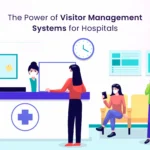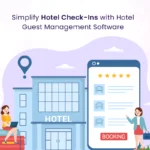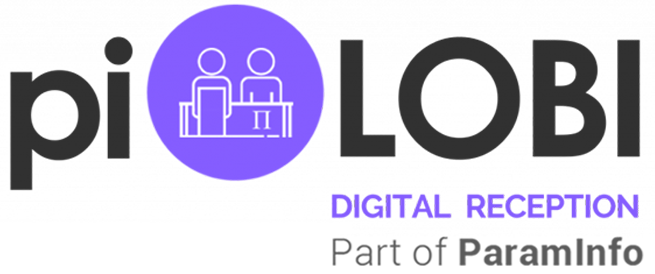
Visitor Activity Management: How the Process Works
In today’s fast-paced world, speed, security, and effective management of visitor activities are very important for any type of organization; it doesn’t matter whether it’s a corporate office, manufacturing unit, educational institution, school, or hospital. Giving importance to the safety and security of visitors is no longer optional; rather it has become a necessity. A robust visitor activity management system provides a systematic guide on how to handle visitor flow, enhance safety, improve operational efficiency, and ensure regulatory compliance.
Visitor activity management involves monitoring your visitors and regulating their actions, such as their entry into an office, movement within the premises, and exit from a facility. This practice not only enhances the experience for guests but also bolsters security and ensures adherence to regulations. An effective visitor activity system serves as the practical extension of an organization’s security program, aligning with key operational goals and meeting essential statuary requirements.
Key Points Related to Visitor Activity Management
- Organizations verify visitor identities to maintain safety.
- They aim to simplify check-in and check-out processes to make them quick.
- Improving visitors’ feel during their visit is a priority.
- They also keep thorough records to meet audit rules and compliance needs.
Many modern workplaces rely on technology to streamline and enhance this process. Visitor management systems have become essential tools for this purpose.
Visitor Activity Management Process Explained
Organizations use a step-by-step method to manage guests or other outside individuals who come to their offices. Running this visitor activity management system keeps things secure, compliant with rules, and smooth throughout the visitor’s visit.
Let me lay out how the process works:
1. Signing Up Ahead of Time: Guests share details like why they’re there, who they’re meeting, and what time they plan to show up. They do this with an online form or through an email invite. This helps the security team check information before they arrive.
2. Checking In on Arrival: When guests arrive, they check in using a receptionist, a kiosk, or sometimes a QR code. The system tracks the time they show up and can ask for ID proof if required.
3. Proving Identity: The system checks who visitors are by linking up with ID scanners. This makes sure people who are allowed can get in.
4. Issuing Badges: Visitors receive a badge, either paper or digital, that shows their name, picture, host info, and where they can go.
5. Controlling Access: Visitors can enter certain areas depending on their role or reason for visiting. Door access systems work with this process.
6. Tracking in Real Time: Security staff can watch where visitors go as it happens, making sure they stay in approved areas.
7. Connecting with Labour Management Systems: In places where many workers are present, combining the VMS with a labor management system helps keep visitor and worker movements organized. It reduces blockages and improves safety measures.
8. Functions Linked to Emergency Situations: During emergencies, VMS creates evacuation lists to track visitors and ensure they gather at the emergency assembly area.
9. Check-Out Process: Visitors log out when leaving, and the system records their exit time. This keeps records accurate and helps with emergency plans.
Setting up a clear visitor management method boosts audit preparation, makes workplaces safer, and gives guests a better experience.
Why is Visitor Activity Management Important?
Managing and tracking visitors plays a big role in creating a solid security plan for any organization. Keeping track of who comes in and out ensures that nobody enters without proper logging, checking, or approval. This approach boosts safety and also helps the facility run by keeping visitor access organized and under control.
Managing visitors includes important steps like pre-registration, check-in, and giving out badges. When visitors pre-register, it makes check-ins smoother and ensures approved people can enter the building. Security teams can use this advanced information to check backgrounds if needed, making sure no visitor poses a threat. When visitors arrive, they check in at the front desk and get badges showing their access level and the places they can go to. This organized system helps prevent unauthorized access and keeps track of all visitors.
Keeping track of visitors in real-time helps strengthen security by ensuring constant supervision of everyone on the property. Security teams use this to follow visitor activity inside the building. This can be key to spotting and responding to unusual situations. To maintain safety and safeguard critical data, this type of monitoring becomes vital in places like banks or healthcare centers that need strict security precautions.
7 Benefits of Visitor Management System
1. Gives Guest Great First Impression
Visitor management software (VMS) lets you make a good impression on guests before they step inside your workplace. You can send them a personalized invite that explains details about their visit. Share directions, parking info, and any unique rules or features they should know about your workplace ahead of time. You could also send them the NDA in advance, giving them extra time to review and sign it without feeling rushed.
2. Keeps Your Business Polished & Professional
A VMS replaces the old-school pen and paper method by offering a stylish digital sign-in system that showcases your brand. It speeds up and simplifies how visitors check into your workplace, making things smoother for them. Your team, meanwhile, spends less time managing visitor details and can concentrate on tasks that count.
3. Automatically Notifies When Guests Arrive
A visitor management system, or VMS, lets your front desk staff focus on making guests feel comfortable and ready for their visit. Instead of running around to find a guest host, the system notifies them. This gives your staff time to share useful workplace details with visitors or even offer a drink while they wait. These little gestures can leave a strong first impression of your company.
4. Adds Extra Layer of Security to the Workplace
A VMS helps you maintain security at your workplace. It lets you screen visitors in advance, so you know everyone on-site is authorized to be there. You can also track guest stay durations by showing their check-in time on personalized badges. Instead of handing out your main WiFi password, it allows your team to give guests temporary secure access details for their visit.
5. Helps Meet Your Workplace Compliance Requirements
VMS helps you keep digital visitor records organized. You can check these records either or export them whenever you need to review more details. A visitor management tool also lets you protect visitor data by allowing you to decide which admins can access and manage it.
6. Helps in Multiple Location Management
By using a centralized system to manage visitors, you can oversee several locations, expand to new sites, and make your processes uniform. It also ensures that visitors have the same smooth and quality experience no matter which workplace they visit.
7. Keeps Workplace Occupancy Data Accurate
Finally, a visitor management software helps track everyone present onsite by providing accurate occupancy data. This lets your team plan things like welcome kits and food services. It also allows you to share clear foot traffic numbers with your executive team, giving them a better idea of who visits and how many people are entering the workplace.
In a Nutshell
Digital visitor management systems keep facilities running and without trouble. These tools act as key security measures and help organizations stay safe. Automating how visitors are managed not boosts security but also makes operations run better. It becomes crucial to track visitors and guests during emergencies, to account for everyone, and locate them fast. This helps teams respond in a way that is both structured and efficient.




